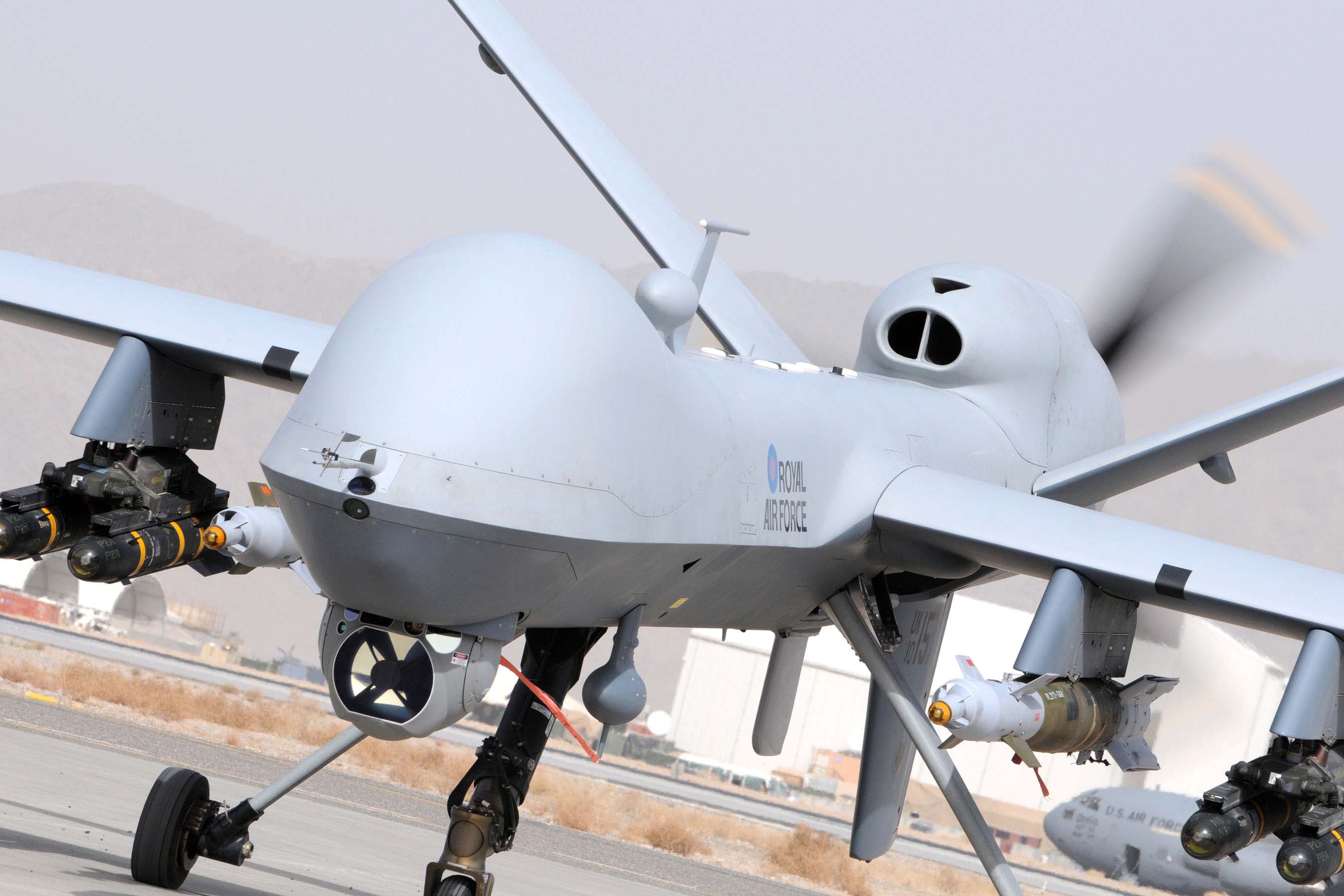ABOVE: Dutch MPs visit an Air Task Force facility, June 5 2015 (Dutch MoD)
Major Developments
- New figures show coalition has now dropped more than 15,000 bombs and missiles on Iraq and Syria, in more than 4,500 airstrikes
- There were four new incidents reported in which it was claimed coalition aircraft may have caused civilian or ‘friendly fire’ deaths. However, the coalition has only reported an airstrike in the direct vicinity of one of these events
- Coalition ISR – intelligence, surveillance and reconnaissance missions – still lag far behind Afghanistan, despite far higher tempo of strikes in Iraq and Syria
- British Reaper drones now using a larger bomb last employed four years ago
Civilian Casualties
- Three new events were reported in Iraq, and one in Syria, in which civilian or ‘friendly fire’ deaths were attributed to the coalition. However, based on available evidence it appears unlikely that coalition aircraft participated in all of these cases.
- On June 5th 2015, the town of Anah in western Anbar was allegedly struck by an airstrike. Mustafa Tarif Habib al-Ani and three or four female relatives were reported killed when their house was destroyed. Three Islamic State militants also reportedly died in the attack.
While all local sources attributed the attack at the town to coalition aircraft, CJTF-OIR has only reported a strike “near Haditha” for that date, which lies approximately 30 miles to the east of Anah.
- The Tark military camp near Fallujah was struck on June 6th 2015, killing 6 Iraqi soldiers and wounding eight. While some social media sites blamed “the international coalition” most news sources indicated that the attack had been the work of Islamic State. The coalition also reported no strikes in the vicinity of Fallujah on that date.
- On June 7th the village of Dali Hasan in Syria was reportedly struck by aircraft. “killing seven civilians from one family, including 5 children and a woman” according to the Syrian Network for Human Rights. The Syrian Observatory for Human Rights also attributed the attack to the coalition. CJTF-OIR has confirmed the following for June 6th-7th 2015 “Near Aleppo, one airstrike struck an ISIL tactical unit, destroying an ISIL ant-aircraft artillery piece and an ISIL fighting position.”
- Fresh airstrikes on the town of al-Hawija – scene of a devastating coalition attack the week before – saw as many as 50 civilians killed when the town’s marketplace and bridge were struck on June 11th. However almost all sources attributed this new event to Iraqi military aircraft.
Devastation at al-Hawija market – almost certainly caused by Iraqi warplanes
Coalition actions
- Coalition aircraft carried out 161 new airstrikes during the week – with 60 per cent of attacks focused on Iraq
- In Syria, coalition airstrikes most heavily targeted areas around Kobane (25 strikes) and Ar Raqqah (20 strikes.) Canadian aircraft also participated in their third declared airstrike on Islamic State within Syria, bombing “an ISIL compound” on June 9th.
- The latest data from US Air Force Central Command (AFCENT) shows that crucial battlefield aerial reconnaissance or ISR for Iraq and Syria is barely improving – despite the high number of strikes and an absence of coalition forces on the ground
- The coalition reported airstrikes at 13 different locations across Iraq for this week – indicating how widespread Islamic State forces remain. Strikes were most heavily concentrated at Bayji and Tal Afar with 20 attacks each. Mosul was also heavily targeted, with 16 fresh airstrikes.
- British Reaper drones were reported as using their bigger GBU-12 bombs in an attack in Iraq on June 5th. According to data released by the UK Ministry of Defence, this is the first occasion that its Reapers have used the 500lb bomb since November 2011, in Afghanistan. There has been some speculation that the British have recently avoided using the weapon because of the greater threat it might represent to non-combatants.

Archive image of a British Reaper in Afghanistan, armed with GBU-12 bombs and Hellfire missiles (MoD)
▲ Dutch MPs visit an Air Task Force facility in the Middle East, June 5 2015 (Dutch MoD)

